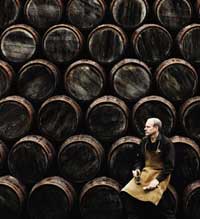|
威士忌的产地有哪些
[ 2007-02-12 14:59 ]
 Scotland can be broken into four very geographical regions when looking at strong characteristics in whisky. As with everything, there are exceptions to the rule, but in very broad terms these descriptions will assist you when choosing whiskies: Scotland can be broken into four very geographical regions when looking at strong characteristics in whisky. As with everything, there are exceptions to the rule, but in very broad terms these descriptions will assist you when choosing whiskies:
The Lowlands
The Lowlands region lies south of a line drawn from the Clyde estuary, on the west coast, to the Tay estuary on the east coast. There are fewer distilleries in the Lowland region than in any other of the regions. Whiskies from Lowland distilleries tend to much softer and lighter in character. They often display very malty, grassy characteristics and subtle delicate aromas than whiskies from other regions.
The Highlands
Moving north of this line stretching from the Clyde to the Tay takes us in to the Highland region. The Highland region includes most of the rest of mainland Scotland, which in Scottish terms is a very large area, and thus a very large number of characteristics can be found in Highland Malt Whiskies. Generalisations about the Highland region are less valid, as its whiskies will range from dry and heathery to sweet and fruity -some even have a touch of smoke due to their proximity to the west coast.
Speyside
Technically Speyside lies within the Highland region. It is home to approximately half of Scotland's malt whisky distilleries. This small area of land located to the north west of Aberdeen produces mellow, sweet, malty and particularly fruity malty whiskies.
Islands (often separated out to Islay with other islands placed in the Highland region)
The Islands stretch from the Orkney Islands located to the north coast of Scotland, all the way now the west coast encompassing Skye, Jura, Mull Arran and Islay. The Islands, in general, produce some of the more robust whiskies with coastal influences e.g. salty tang, fresh sea air -however, it is more specifically Islay that produces the heavy peaty, smoky tasting malts in particular the distilleries located on south coast of Islay.
点击查看本频道更多精彩内容
|